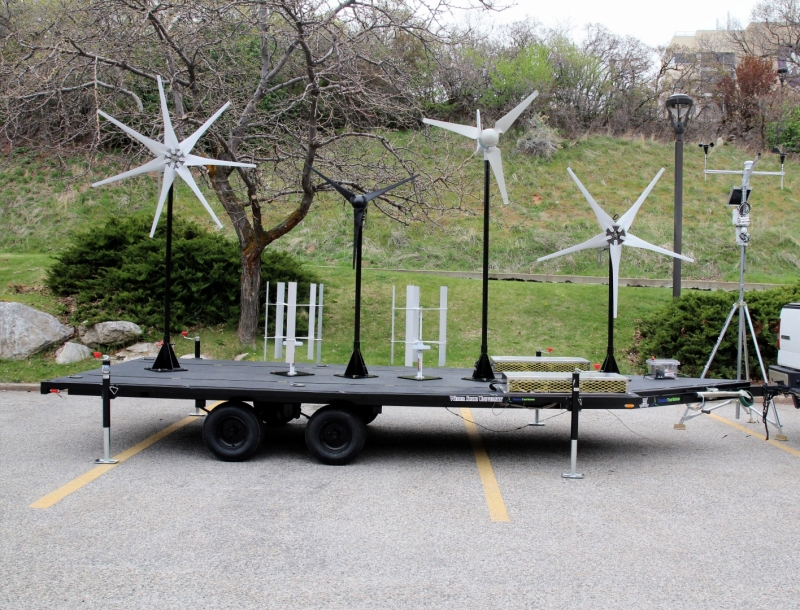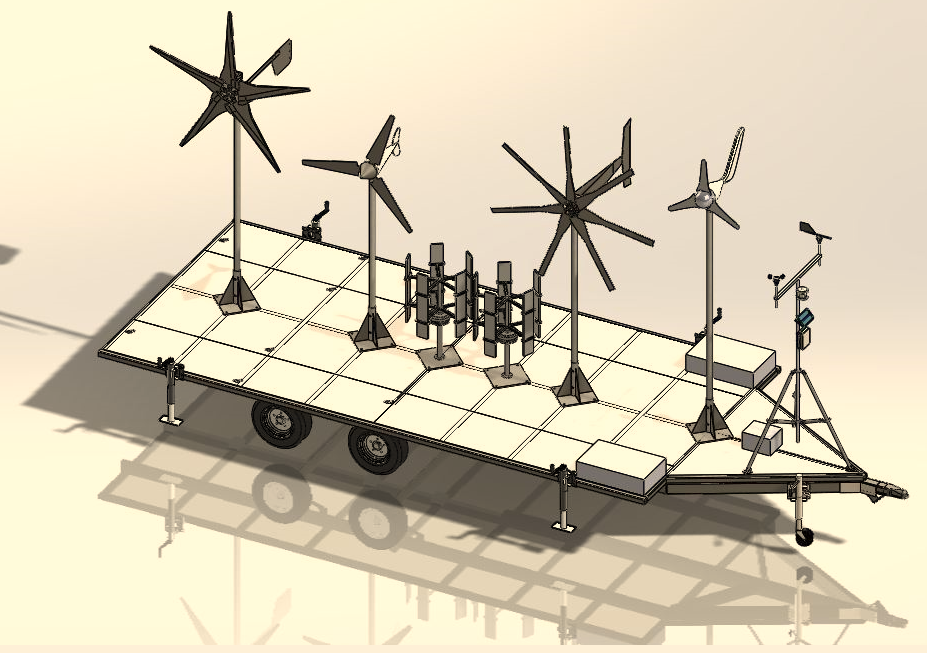Wind Turbines

Engineering technology students at Weber State University have designed and developed a portable trailer for five wind turbines that will sit at the mouth of Weber Canyon for the next year in an effort to prove that it is cost effective to capture energy from canyon winds using residential-scale wind turbines.
The university recently acquired 14 acres at the mouth of the canyon, known for its intense wind gusts in the morning and evening for commuters along U.S. 89. Little research has been done on canyon winds and their potential for producing renewable wind energy, the students said during a presentation on Friday, so 10 students in Jeremy Farner's design graphics and engineering technology class took the project upon themselves.
"This project was originally proposed by our sustainability office, in particular by Jacob Cain," Farner said. "His intent was to study the cost effectiveness of installing a small-scale wind turbine wind farm at the mouth of Weber Canyon."
 Small scale meaning low to the ground with small residential-scale wind turbines placed in a wall-type configuration. Farner said the winds in the mouths of canyons are very dense and therefore close to the ground and intense in the morning and evening hours due to the temperature differential of the mountain valleys and Wasatch Front valleys. The project was to research the economic viability of offsetting a larger portion of WSU's power consumption by producing power at the mouth of Weber Canyon.
Small scale meaning low to the ground with small residential-scale wind turbines placed in a wall-type configuration. Farner said the winds in the mouths of canyons are very dense and therefore close to the ground and intense in the morning and evening hours due to the temperature differential of the mountain valleys and Wasatch Front valleys. The project was to research the economic viability of offsetting a larger portion of WSU's power consumption by producing power at the mouth of Weber Canyon. "There is very little research on wind power potential with canyon winds that are dense and close to the surface. Traditional wind power requires areas that are consistently windy, 15 to 20 miles per hour, at higher altitudes which lend themselves to the massive blades and sweep radius to be cost effective at converting wind power into energy," he said. "This project was designed to test multiple commercially available wind turbines."
"There is very little research on wind power potential with canyon winds that are dense and close to the surface. Traditional wind power requires areas that are consistently windy, 15 to 20 miles per hour, at higher altitudes which lend themselves to the massive blades and sweep radius to be cost effective at converting wind power into energy," he said. "This project was designed to test multiple commercially available wind turbines."It includes both traditional horizontal turbines with three to seven blades and vertical turbines. The height, orientation and position relative to each other will be tested to determine the most economically beneficial configuration to generate the maximum amount of power.
Originally written by Jamie Lampros of The Standard Examiner
Originally written by Jamie Lampros of The Standard Examiner
